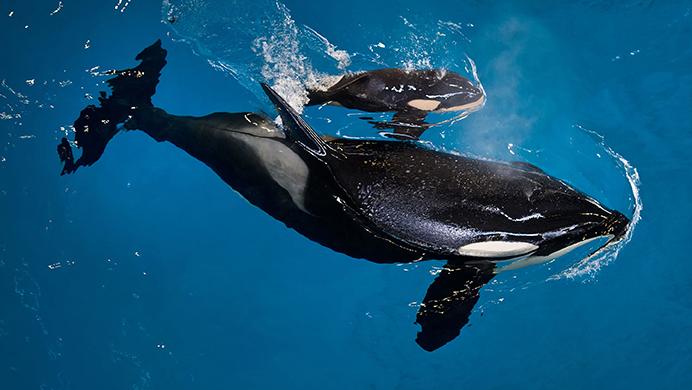By Hannah Webster
Just last week, Kyara, a 3-month-old orca calf, died at SeaWorld in San Antonio. Although SeaWorld claims that the orca’s death was not related to living in captivity, marine mammal researchers say the specific living conditions factored into the disease. For example, Naomi Rose, a marine mammal scientist at the advocacy organization Animal Welfare Institute in Washington, D.C., said pneumonia (which is a likely cause of Kyara’s death) is a “fairly common cause of death” for marine animals living in captivity because of the added stress.
“Don’t go to SeaWorld,” One Direction artist Harry Styles urged after asking a San Diego audience if they liked dolphins, in July 2015.
Being the popular star that Styles is, his few words about boycotting SeaWorld for holding wild animals in captivity went viral and significantly hit SeaWorld’s image and earnings. That following month, SeaWorld Entertainment reported a 84 percent drop in earnings.
SeaWorld was quick to respond after the musician’s comments. “Dear Harry, we’ve seen a concert clip of you urging your fans not to visit SeaWorld. We want you to know we love dolphins, too. We care for the animals in our parks like we would our own family.”
According to the section of its website SeaWorld Cares, SeaWorld’s mission is “inspiring people to care for and protect wild animals and wild places is at the core of what we do at SeaWorld.” The website also says its mission is to give guests to “explore the many wonders of our world” and learning information about the 85,000 animals that SeaWorld shelters.
Around 85,000. I cannot fathom such a massive number. The number of animals that call SeaWorld “home” makes me so uncomfortable — how does one organization manage that many animals?
From the way that SeaWorld portrays its public image, you would think that the animals living there are safe and healthy. However, Kyara is not the first orca to die in captivity at SeaWorld. The orca Tilikum, for example, which was featured in the documentary Blackfish, eventually died from bacterial infections. And according to the Whales and Dolphins Conservation, out of 164 orcas that died in captivity, 46 such deaths happened at SeaWorld-owned facilities.
I have never been to SeaWorld, nor do I plan on it, because I really do not believe in captivity of animals. In captivity, orcas are held in tanks about 1/10,000th of 1 percent the size of their natural habitat. Even worse, the mothers have to give birth in high-stress situations and can easily be contaminated with disease. The smaller the tanks, the more difficult it is for the animals to nurse and swim, which leads to stress, which in turn can lead to an early death, such as Kyara’s.
Harry Styles is not the first celebrity to speak out against SeaWorld. Once the documentary Blackfish gained tremendous attention in 2013, many celebrities spoke out, such as Ariana Grande, Cher, and Matt Damon. All of this is incredibly important, and it is important for celebrities and those with persuasive power to use their platform for good. If Styles’ comment led to an 84 percent drop in SeaWorld’s earnings, imagine what else could happen if celebrities used Kyara’s death as a talking point on wild animals in captivity.



